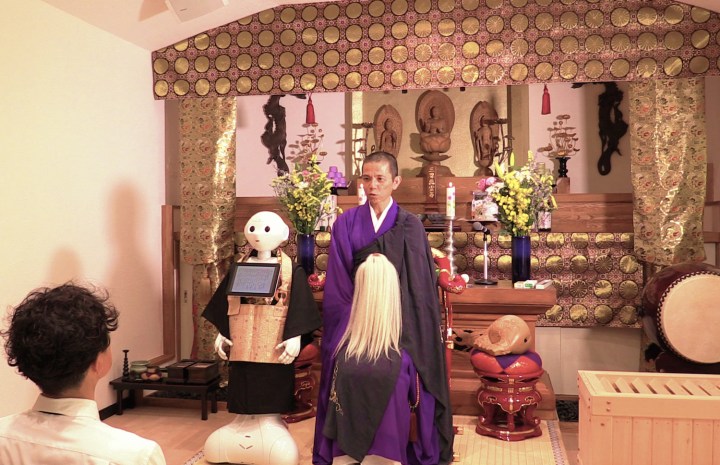
Ever since the 120-cm-tall robot went on sale in 2015, it’s been deployed in a range of roles around the world, including helping out in phone stores, airports, hospitals, and train stations.
Its latest job, however, could be its most unusual yet. Dressing the humanoid robot in a Buddhist monk’s robe, Japanese firm Nissei Eco has programmed Pepper to chant Buddhist sutras at funerals in a bid to offer “a cheaper alternative to human priests,” according to the Japan Times.
Nissei Eco manufactures plastic products but 17 years ago took the interesting step of diversifying into the funeral business. Pepper’s funeral appearances are expected to cost 50,000 yen (about $455) a time, markedly less than what a living, breathing Buddhist priest would expect to receive in the same role.
As the Japan Times points out, societal changes in the country have led to an increase in people looking for alternative approaches to funerals. It’s not yet clear if there’s solid demand for robot involvement, but in a country known for its abundance of techies, having Pepper see you off at the end of your life could be the perfect tribute. It’s just a pity you won’t be there to see it.
A chanting, berobed Pepper will be making an appearance at next week‘s International Funeral and Cemetery Show in Tokyo, an event where businesses can show off their latest funeral-related wares. If visitors to the show rather like Nissei Eco’s idea of a robot priest rolling up at funerals, SoftBank may well find itself processing a few more orders for Pepper in the coming weeks.
SoftBank launched Pepper two years ago, touting it for its ability to understand human emotions, which it processes via on-board cameras and sensors. It can respond with its own emotions through body posture, tone of voice, and color changes shown on the display attached to its torso. Besides having the ability to sing, dance, and tell jokes, it can also be programmed for different environments and activities, though at the current time it’s mainly used by businesses and organizations to meet and greet customers. Around 10,000 Pepper robots are believed to have been sold so far.
SoftBank partnered with French robotics company Aldebaran SAS to develop Pepper, and Foxconn is helping to build it. The robot costs 198,000 yen ($1,810), though a monthly fee of 24,600 ($225) yen is also required.


